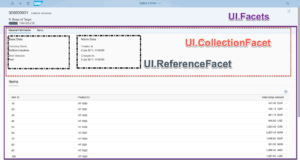As I commented in the article How to Start Developing on Your Own SAP ABAP server “Developer Edition” if you have in mind to use the server installed in the articles “How to prepare your development environment” (Part 1 & part 2); You will need to install SAP Cloud Connector (SCC) on it. The SCC will allow you to access the On-Premise server from the Cloud development environment (SAP Business Application Studio or SAP WebIDE).
In order to install SAP Cloud Connector you will need to have previously installed the JAVA virtual machine (JVM). You can install the corresponding version, downloading it from the Oracle page; although SAP recommends using one that you can download directly from the same website where the SAP development tools are (https://tools.hana.ondemand.com/#cloud)
Keep in mind that the version of the JVM to install will depend on the version of the Cloud Connector that you are going to install
JDK versions and SCC support
| JDK | JDK version | Cloud Connector version |
| SAP JVM 64-bit (recommended) | 7 | 2.x up to 2.12.2 |
| 8 | As of 2.7.2 | |
| Oracle JDK 64-bit | 7 | 2.x up to 2.12.2 |
| 8 | As of 2.7.2 |
At the time I wrote this blog the most recent version of the Cloud Connector was 2.13.0 so I needed version 8 of the JDK
sapjvm-8.1.068-linux-x64.rpm
Download the file and upload it to a folder on the Linux server
Access with super user privileges
sudo hisNavigate to the folder where you have uploaded the file and install SAP JVM
sudo rpm -i sapjvm-8.1.068-linux-x64.rpmDownload the latest version of the Cloud Connector for Linux from https://tools.hana.ondemand.com/#cloud
In my case, the version
sapcc-2.13.0-linux-x64.zip
Upload the downloaded file to a folder on the Linux server:
Navigate to the folder where you have uploaded the file and unzip it using the command
unzip sapcc-2.10.2-linux-x64.zip


Install Cloud Connector
sudo rpm -i com.sap.scc-ui-2.13.0-8.x86_64.rpmOnce the installation is finished, the service will start automatically, you can check the status of the service with the following command
systemctl status scc_daemonConsultant’s note: The first time I installed the service on a SAP NetWeaver AS ABAP Developer Edition server, I made the mistake of installing the wrong version of the JAVA virtual machine and the installation of the Cloud Connector (SCC) failed. If something similar happens to you, I recommend that before reinstalling the SCC package, you uninstall it completely, because the previous installation leaves “garbage” in the system.
It could even happen that during the reinstallation of the service, or when trying to start the service manually, it shows you a message warning that the service cannot be started because it does not exist. In this case, I recommend the same, uninstall the service and reinstall it.
To delete it completely you must use the command
sudo rpm -and <package_name_no_extension>Be careful not to include the name of the extension, because otherwise you will get a message that the package does not exist.
In my case it would be something like this:
sudo rpm -and com.sap.scc-ui-2.13.0-8.x86_64Once the package is removed, make sure that the folder “/ opt / sap / scc” does not exist or is empty. If not, remove it before reinstalling.
Reinstall the service with the command
sudo rpm -i com.sap.scc-ui-2.13.0-8.x86_64.rpmOnce you have started the service, you can access the administration panel with the URL
https: //vhcalnplci.dummy.nodomain: 8443 /
User: Administrator (respect the capital letters)
Password: manage
The first thing it will ask you to do is change the default password of the Administrator user.
The process of configuring the Cloud Connector, to be able to link it with an SCP Trial account and the ABAP server, I will explain in another article.





Pingback: How to Start Developing on Your Own SAP ABAP server "Developer Edition"
Pingback: How to Configure SAP Cloud Connector in ABAP Developer Edition with a SAP Cloud Platform Trial account. - DeveloperCertification